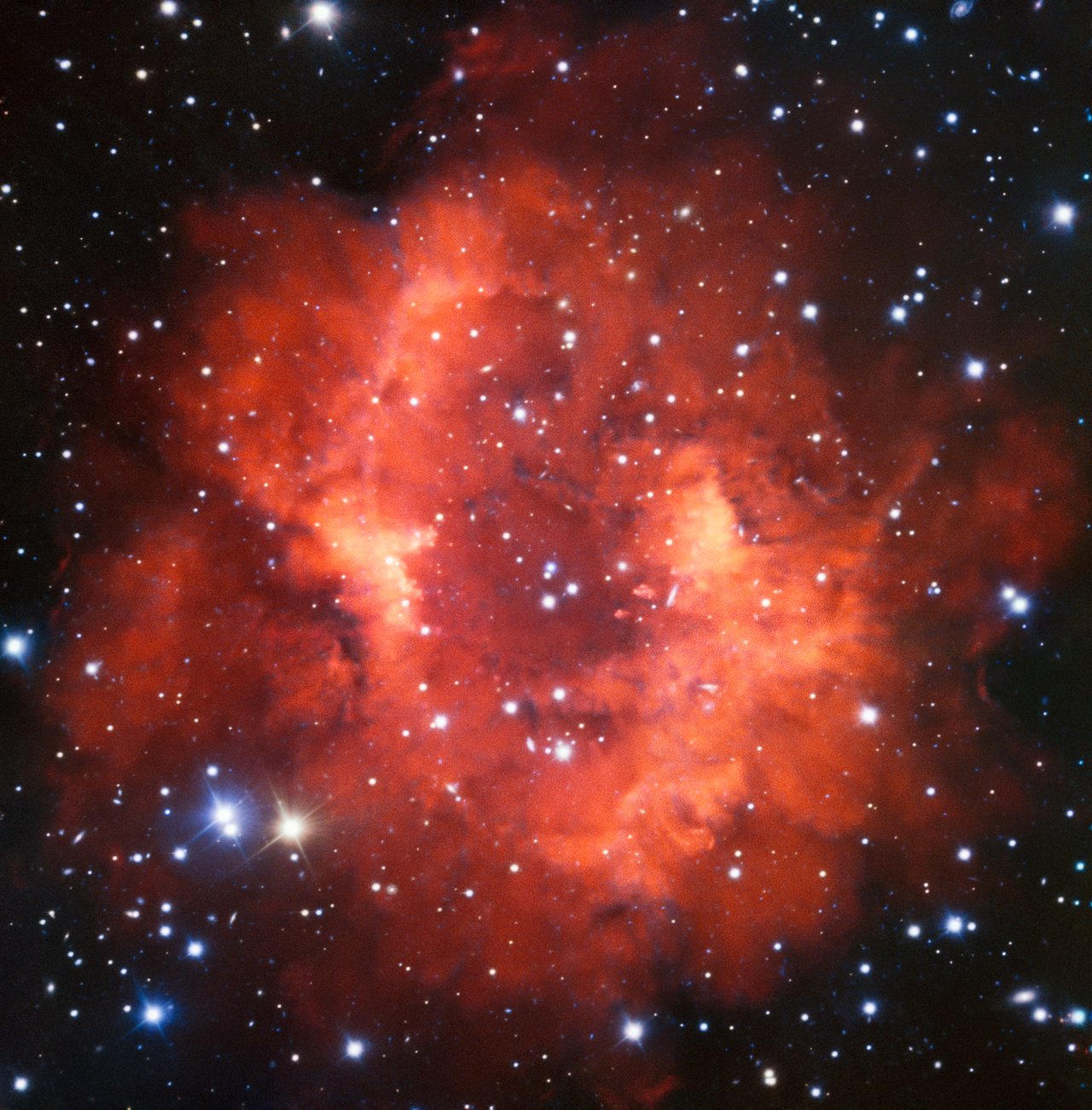
This beautiful cosmic object is a planetary nebula named Abell 24, captured by the European Southern Observatory’s Very Large Telescope (VLT).
Located in the constellation of Canis Minor (The Lesser Dog), this is the remnants of a long-dead star. A planetary nebula is not related to planets — the confusing name comes from a time when nebulae were observed using primitive telescopes which weren’t strong enough to differentiate between nebulae and planets. In fact, a planetary nebula is a swirl of dust and gas which is illuminated by the core of a dead star.
The lifecycle of a star involves a bright, active phase, in which the star glows with light and heat due to the fusion of hydrogen into helium within its core. But as thousands of years pass, the star will eventually burn through all of its hydrogen and will eventually run out of fuel. When this happens, the forces of gravity which are pushing into the star from the outside are no longer balanced by the energy being pushed outward from the star’s core. This causes the core of the star to collapse, shrinking down to a hot, dense mass. But at the same time, the cooler outer layers of the star expand, causing the star to grow into a red giant.
The red giant phase is not the end of the story for the star, however. Next, stellar winds pull gas away from the outer layers of the star, creating a shell of gas which spreads out from around the star. Eventually, the gas will be pulled away until only the hot glowing core remains. The core emits large amounts of ultraviolet radiation, which ionizes the surrounding gas. It is this illuminated gas which forms the glow of a planetary nebula like Abell 24.
This image was captured using the FORS (FOcal Reducer and Spectrograph) instrument on the Very Large Telescope, located in the Chilean desert. The VLT consists of four telescopes, each of which has a main mirror which is 8.2 meters (about 27 feet) in diameter, plus four auxiliary telescopes which are 1.8 meters (7 feet) diameter each. These eight telescopes work together to form the world’s most advanced optical instrument.



